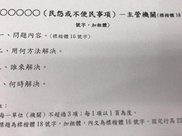< cubes.length; i++) {let cube = cubes[i];let win = wins[i];let _t = t;// + i * .2;let posTarget = {x: win.shape.x + (win.shape.w * .5), y: win.shape.y + (win.shape.h * .5)}cube.position.x = cube.position.x + (posTarget.x - cube.position.x) * falloff;cube.position.y = cube.position.y + (posTarget.y - cube.position.y) * falloff;cube.rotation.x = _t * .5;cube.rotation.y = _t * .3;};renderer.render(scene, camera);requestAnimationFrame(render); } // и°ғж•ҙжёІжҹ“еҷЁеӨ§е°Ҹд»ҘйҖӮеҗҲзӘ—еҸЈеӨ§е°Ҹ function resize () {let width = window.innerWidth;let height = window.innerHeightcamera = new t.OrthographicCamera(0, width, 0, height, -10000, 10000);camera.updateProjectionMatrix();renderer.setSize( width, height ); }}иҝҷж®өд»Јз Ғдё»иҰҒе®һзҺ°д»ҘдёӢеҮ зӮ№пјҡ
- еҲқе§ӢеҢ–еңәжҷҜе’ҢжёІжҹ“еҷЁпјҡеңЁ setupScene еҮҪж•°дёӯпјҢи®ҫзҪ®дәҶдёҖдёӘжӯЈдәӨзӣёжңәгҖҒеңәжҷҜе’ҢжёІжҹ“еҷЁпјҢ并е°ҶжёІжҹ“еҷЁзҡ„ DOM е…ғзҙ ж·»еҠ еҲ°йЎөйқўдёӯ гҖӮ
- еҲқе§ӢеҢ–зӘ—еҸЈз®ЎзҗҶеҷЁпјҡеңЁ setupWindowManager еҮҪж•°дёӯпјҢеҲӣе»әдәҶдёҖдёӘзӘ—еҸЈз®ЎзҗҶеҷЁе®һдҫӢпјҢ并еҲқе§ӢеҢ–дәҶзӘ—еҸЈе№¶ж·»еҠ еҲ°зӘ—еҸЈжұ дёӯ гҖӮ
- жӣҙж–°з«Ӣж–№дҪ“ж•°йҮҸе’ҢдҪҚзҪ®пјҡйҖҡиҝҮ updateNumberOfCubes еҮҪж•°пјҢж №жҚ®зӘ—еҸЈз®ЎзҗҶеҷЁдёӯзӘ—еҸЈзҡ„ж•°йҮҸе’ҢдҪҚзҪ®дҝЎжҒҜпјҢеҠЁжҖҒеҲӣе»әз«Ӣж–№дҪ“е№¶ж №жҚ®зӘ—еҸЈдҪҚзҪ®жӣҙж–°е…¶еңЁеңәжҷҜдёӯзҡ„дҪҚзҪ® гҖӮ
- жёІжҹ“еҫӘзҺҜпјҡеңЁ render еҮҪж•°дёӯ пјҢ дҪҝз”Ё requestAnimationFrame дёҚж–ӯеҫӘзҺҜжёІжҹ“еңәжҷҜпјҢе№¶ж №жҚ®зӘ—еҸЈз®ЎзҗҶеҷЁдёӯзӘ—еҸЈзҡ„дҪҚзҪ®жӣҙж–°з«Ӣж–№дҪ“зҡ„дҪҚзҪ®е’Ңж—ӢиҪ¬ гҖӮ
- е“Қеә”зӘ—еҸЈеӨ§е°ҸеҸҳеҢ–пјҡйҖҡиҝҮ resize еҮҪж•°пјҢеңЁзӘ—еҸЈеӨ§е°ҸеҸҳеҢ–ж—¶йҮҚж–°и®ҫзҪ®зӣёжңәзҡ„е®Ҫй«ҳжҜ”е’ҢжёІжҹ“еҷЁзҡ„еӨ§?гҖӮ?д»ҘйҖӮеә”ж–°зҡ„зӘ—еҸЈе°әеҜё гҖӮ
жҺҘдёӢжқҘзңӢзңӢжңҖж ёеҝғзҡ„е®һзҺ°пјҡWindowManagerпјҢд»Јз ҒеҰӮдёӢпјҡ
class WindowManager { #windows; #count; #id; #winData; #winShapeChangeCallback; #winChangeCallback;constructor () {let that = this;// зӣ‘еҗ¬ localStorage жҳҜеҗҰиў«е…¶д»–зӘ—еҸЈжӣҙж”№addEventListener("storage", (event) => {if (event.key == "windows") {let newWindows = JSON.parse(event.newValue);let winChange = that.#didWindowsChange(that.#windows, newWindows);that.#windows = newWindows;if (winChange) {if (that.#winChangeCallback) that.#winChangeCallback();}}});// зӣ‘еҗ¬еҪ“еүҚзӘ—еҸЈжҳҜеҗҰеҚіе°Ҷе…ій—ӯwindow.addEventListener('beforeunload', function (e) {let index = that.getWindowIndexFromId(that.#id);// д»ҺзӘ—еҸЈеҲ—иЎЁдёӯ移йҷӨеҪ“еүҚзӘ—еҸЈе№¶жӣҙж–° localStoragethat.#windows.splice(index, 1);that.updateWindowsLocalStorage();}); } // жЈҖжҹҘзӘ—еҸЈеҲ—иЎЁжҳҜеҗҰжңүеҸҳеҢ– #didWindowsChange (pWins, nWins) {if (pWins.length != nWins.length) {return true;}else {let c = false;for (let i = 0; i < pWins.length; i++) {if (pWins[i].id != nWins[i].id) c = true;}return c;} } // еҲқе§ӢеҢ–еҪ“еүҚзӘ—еҸЈпјҲж·»еҠ е…ғж•°жҚ®д»Ҙе°ҶиҮӘе®ҡд№үж•°жҚ®еӯҳеӮЁеңЁжҜҸдёӘзӘ—еҸЈе®һдҫӢдёӯпјү init (metaData) {this.#windows = JSON.parse(localStorage.getItem("windows")) || [];this.#count= localStorage.getItem("count") || 0;this.#count++;this.#id = this.#count;let shape = this.getWinShape();this.#winData = {id: this.#id, shape: shape, metaData: metaData};this.#windows.push(this.#winData);localStorage.setItem("count", this.#count);this.updateWindowsLocalStorage(); } getWinShape () {let shape = {x: window.screenLeft, y: window.screenTop, w: window.innerWidth, h: window.innerHeight};return shape; } getWindowIndexFromId (id) {let index = -1;for (let i = 0; i < this.#windows.length; i++) {if (this.#windows[i].id == id) index = i;}return index; } updateWindowsLocalStorage () {localStorage.setItem("windows", JSON.stringify(this.#windows)); } update () {let winShape = this.getWinShape();if (winShape.x != this.#winData.shape.x ||winShape.y != this.#winData.shape.y ||winShape.w != this.#winData.shape.w ||winShape.h != this.#winData.shape.h) {this.#winData.shape = winShape;let index = this.getWindowIndexFromId(this.#id);this.#windows[index].shape = winShape;if (this.#winShapeChangeCallback) this.#winShapeChangeCallback();this.updateWindowsLocalStorage();} } setWinShapeChangeCallback (callback) {this.#winShapeChangeCallback = callback; } setWinChangeCallback (callback) {this.#winChangeCallback = callback; } getWindows () {return this.#windows; } getThisWindowData () {return this.#winData; } getThisWindowID () {return this.#id; }}export default WindowManager;иҝҷж®өд»Јз Ғе®ҡд№үдәҶдёҖдёӘ WindowManager зұ» пјҢ з”ЁдәҺз®ЎзҗҶзӘ—еҸЈзҡ„еҲӣе»әгҖҒжӣҙж–°е’ҢеҲ йҷӨзӯүж“ҚдҪңпјҢ并е°Ҷе…¶дҪңдёәжЁЎеқ—еҜјеҮә гҖӮиҜҘзұ»еҢ…еҗ«д»ҘдёӢз§ҒжңүеұһжҖ§пјҡ
- #windows: еӯҳеӮЁжүҖжңүзӘ—еҸЈзҡ„ж•°з»„ гҖӮ
- #count: и®°еҪ•зӘ—еҸЈзҡ„ж•°йҮҸ гҖӮ
- #id: еҪ“еүҚзӘ—еҸЈзҡ„е”ҜдёҖж ҮиҜҶз¬Ұ гҖӮ
- #winData: еҪ“еүҚзӘ—еҸЈзҡ„е…ғж•°жҚ®пјҢеҢ…жӢ¬зӘ—еҸЈзҡ„еҪўзҠ¶гҖҒиҮӘе®ҡд№үж•°жҚ®зӯү гҖӮ
жҺЁиҚҗйҳ…иҜ»
- е…Қиҙ№иҺ·еҸ–GPT-4зҡ„дә”з§Қе·Ҙе…·
- HashMapпјҡJavaдёӯзҡ„й«ҳж•Ҳж•°жҚ®з»“жһ„
- дёҠж•°жҚ®дёӯеҸ°зҡ„第дёҖжӯҘпјҡзҗҶжё…ж•°жҚ®дёӯеҸ°5дёӘе»әи®ҫжӯҘйӘӨ
- Nodejs зҡ„ CommonJS 规иҢғе®һзҺ°еҺҹзҗҶ
- жһ¶жһ„жЁЎејҸи§ЈжһҗпјҢжҺўзҙўеёёи§Ғжһ¶жһ„жЁЎејҸзҡ„дјҳеҠҝдёҺйҖӮз”ЁжҖ§
- AIз»ҳз”»жҸӯзӨәжңӘзҹҘзҡ„зү№ејӮеҠҹиғҪ
- з”өи„‘йҖүжӢ©еҚ•жқЎеҶ…еӯҳжҲ–дёӨжқЎеҶ…еӯҳз»„е»әеҸҢйҖҡйҒ“еҶ…еӯҳзҡ„еҢәеҲ«
- EPONе’ҢGPONпјҡж— жәҗе…үзәӨзҪ‘з»ңзҡ„еҢәеҲ«еӨ§жҸӯз§ҳ
- ж— зӣ‘зқЈеӯҰд№ дёӯзҡ„иҒҡзұ»з®—жі•з»јиҝ°
- е…ідәҺ Redis пјҢиҝҷйҮҢжңүдҪ дёҚзҹҘйҒ“зҡ„зҹҘиҜҶ

















